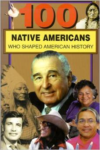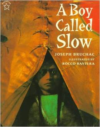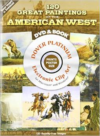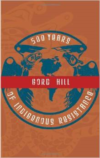Description
Historians discovered many years ago that oral history is a vibrant cornucopia of information. Even better, integrating oral history into traditional modes of inquiry opened up more chances for earning a Ph.D., or getting that career making book contract. In the case of “Through Dakota Eyes: Narrative Accounts of the Minnesota Indian War of 1862,” oral history is the only game in town. Every selection in the book is an oral story from Indians or mixed-blood Indians about the disastrous uprising that killed hundreds of soldiers, settlers, and Indians. One of the editors of “Through Dakota Eyes” is none other than Gary Clayton Anderson, the premier scholar on Dakota history. As usual, Anderson goes above and beyond the call of duty in researching the narratives, providing background color on the people involved (and also providing information about what happened to these people after the uprising, something I greatly appreciated).
For nearly a century after the uprising, articles and books concerning the 1862 war only used white narratives as sources of information. There is definitely nothing wrong with relying on these narratives; they are invaluable sources of information on the uprising. The white narratives also reveal the tragic dimensions of the conflict, showing how innocent men, women, and children died (or persevered) in especially brutal ways. With the addition of these Indian narratives, however, historians can now go inside the camps and meeting places of the Dakotas intimately involved in the conflict.
The narratives are lumped into distinct categories dealing with different stages of the uprising. Each category then provides a succinct description of that particular phase of the war. With each narrative, the editors provide a small capsule of information on the person telling the story, allowing the reader to understand that person’s place in the overall scheme of things. It is recommended to read the endnotes for each narrative, as they provide excellent information on each narrative. Excellent maps and pictures of many of the people involved also help the reader to understand the accounts.
Some of the narratives are more helpful than others. A few are difficult to understand due to poor grammar or contradictory information. Several of the narratives appeared in newspaper articles or as testimony in a case against the government in 1901, and there is a possibility that someone altered or changed them as they saw fit. That does not mean there are not any “WOW!” moments found here. In Cecelia Campbell Stay’s account of the attack on the Redwood Agency (also known as the Lower Agency, where the killing began in earnest on August 18th), Cecelia describes seeing the sunlight flashing on the bayonets of Captain Marsh’s patrol as they headed to their doom at the ferry crossing. Another narrative, now widely used in accounts of the uprising, comes from Wowinape, the son of Little Crow (the leader of the warring Dakota). Battle narratives allow the reader to feel as though they are at Fort Ridgely, New Ulm, or Birch Coulee as the cannons roar and the bullets fly.
As the editors point out, many of the mixed-blood Indian narratives identify a central tension of the conflict, namely the division between Indians who adopted white modes of civilization (the farmer Indians) and those who stayed true to traditional Indian values (the blanket Indians). Many of the mixed-blood Indians worked closely with whites; they feared the war parties of the traditionals just as much as whites did. As the war began to wind down, it was the mixed-bloods along with some full-blooded Indians who confronted the warring Indians, forcing these hostile forces to turn over their white captives in an effort to make peace with the military forces sweeping into the area.
This is an absolutely essential book for anyone interested in the Minnesota 1862 uprising. Actually, anyone writing a paper on this conflict without using this book as a source could find themselves in hot water. Since the editors graciously organized the narratives in chronological order, there is no reason someone unfamiliar with the conflict and its principal figures would have any difficulty understanding the book. Gary Anderson and Alan Woolworth have made an important contribution to Indian scholarship with this impressive tome.






Reviews
There are no reviews yet.